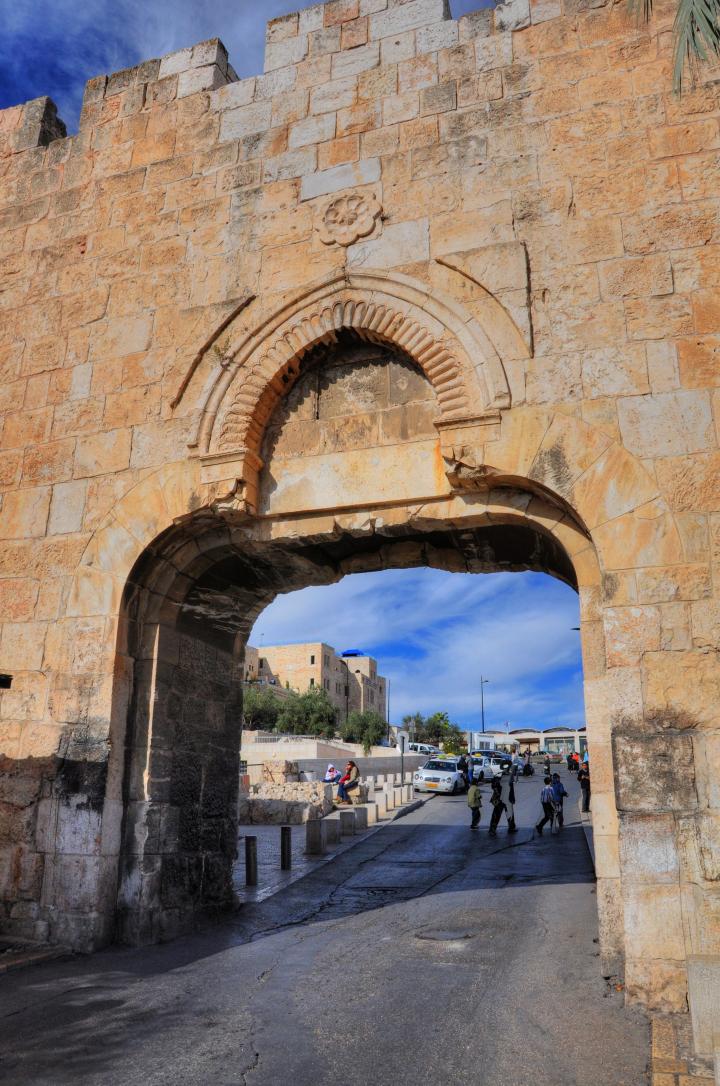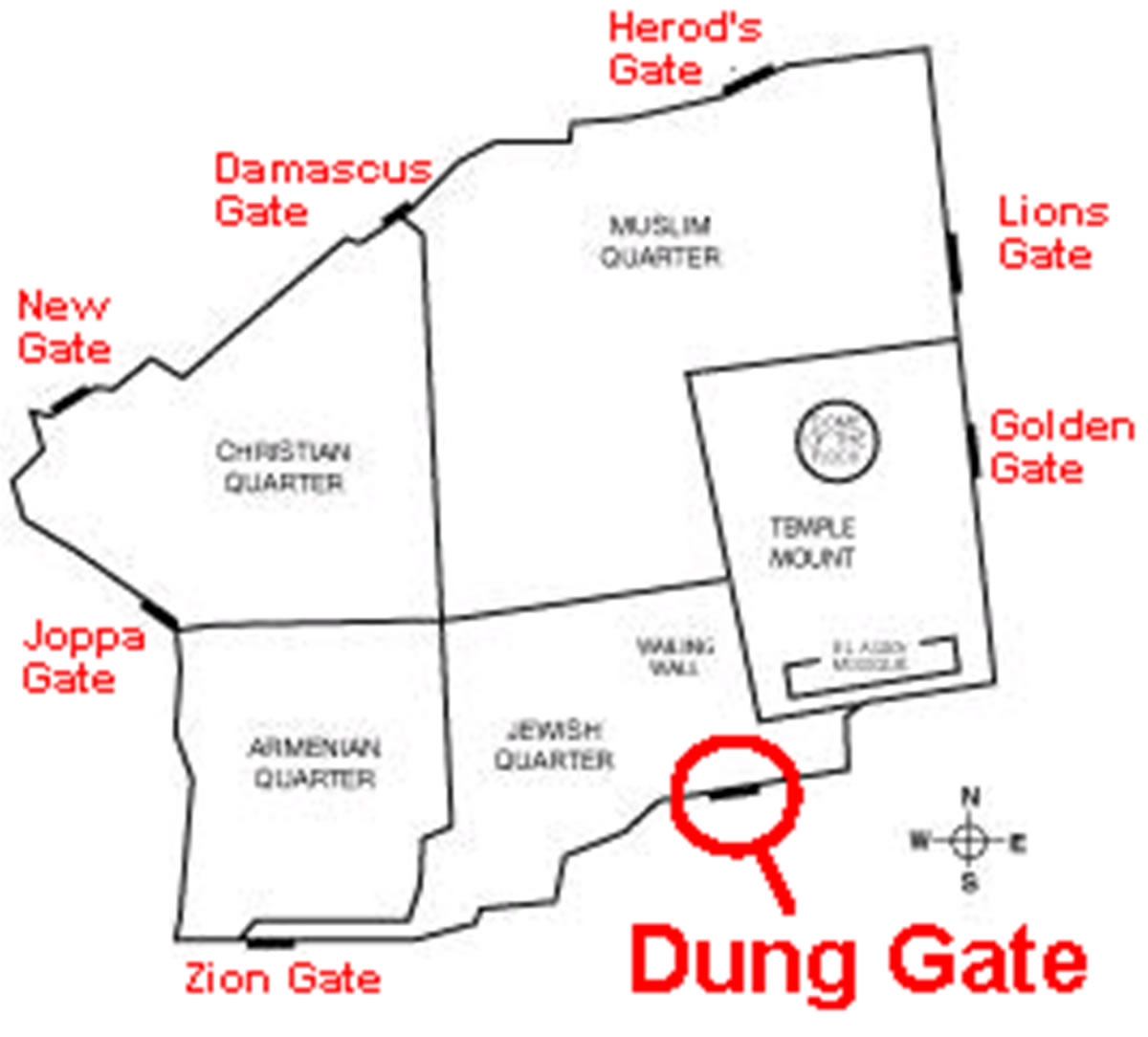While reading through Nehemiah, I started to see Mrs. Foster's favorite topic of discussion for class being brought up once again. Once when Nehemiah explains the damage done to the walls of Jerusalem upon their return from the Babylonian exile (Nehemiah 2:13), and again when he is reporting the repairs to the wall (Nehemiah 3:14). That's right, for the "I've lost count"-th time we have dung mentioned in the Old Testament. Why don't I remember so much poop being discussed in Sunday school? I guess they figured it would probably distract me the lessons they were trying to teach. Oh well, guess what, I get to ask the questions now...why the crap (heheh) was it called the Dung Gate?
First let's see the modern definition of the word "dung." In noun form it can mean either "the feces of an animal" or "something repulsive" (Merriam-Webster). The original name of the gate in Hebrew,
Sha'ar Ashpoth, literally translates to "gate of the garbage," so at least in this instance we can rest assured we are not talking about excrement, but rather the latter meaning of the word, mentioned above (Bible Walks). During the time of the First Temple, this was the gate through which all the garbage and ash from the temple was removed. So that is how it got its name.
Nehemiah was allowed to repair the walls during Persian rule around 445 BC, but the present Dung Gate was built during the construction of the walls by Suleiman "the Magnificent" during the Ottoman occupation in 1558. When Jordanians controlled the city in 1948, following Israel's independence war, they widened the gate to allow for vehicle passage (Bible Walks). This is the form visitors can see today while traveling to the Holy Land.
Now the Dung Gate, though it has been called by different names since its creation, is the closest gate to the Temple Mount. If you were to walk through it today, you would "walk up directly through the security outpost to the
Western (“Wailing”) Wall plaza"and would be able to see the Dome of the Rock and Al Aqsa Mosque up close and personal (Pilgrimage Panorama). You would also be entering directly into the Jewish Quarter.
What once was the gate that only refuse exited the city is now the busiest entrance into the old city of Jerusalem. Named for its original intent and located closest to the Temple Mount, the Dung Gate has its own story to tell in history, from the time of Nehemiah's rebuilding to being used as an entry point by the Israelis during the 6 Day War in 1967 (Bible Walks).




dgbgfbgbfhf
ReplyDeleteProfound
DeleteThank You and I have a tremendous supply: How To Reno A House exterior house makeover
ReplyDelete